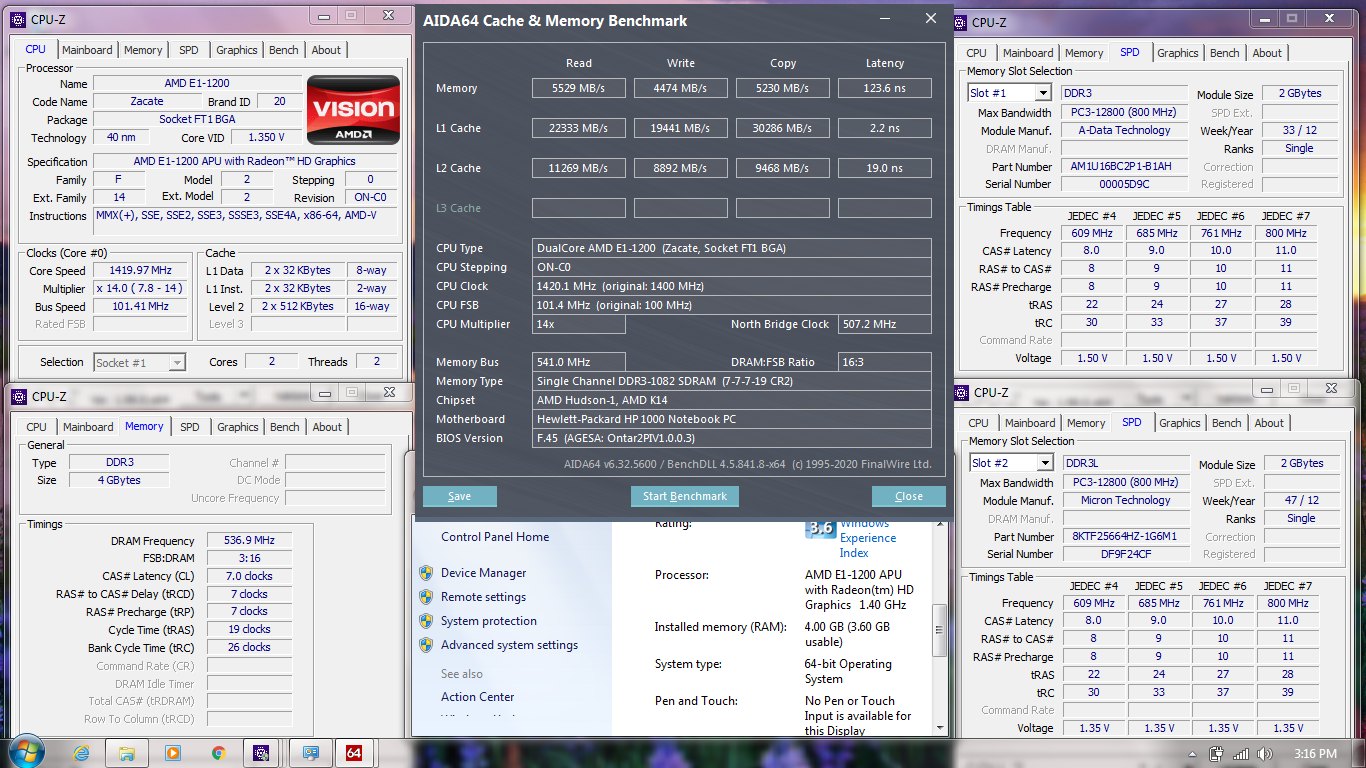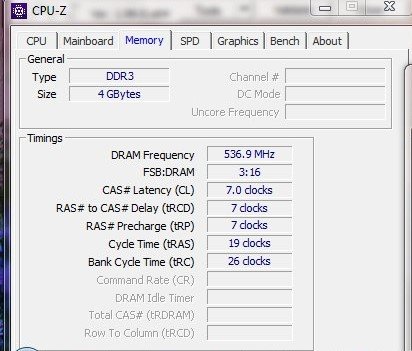AIDA64 - Memory Read score 5529 points with a DDR3 1066MHz SODIMM
Thursday, 01 January 1970 07:00 | Update at null
Media Gallery
Screenshot

Device, Setup, etc


URL
https://hwbot.org/submission/5109633https://bit.ly/3AoVNie
Information Detail
Hardware: DDR3 1066MHz SODIMM
Specs:RAM Total Capacity : 2GB + 2GB
Brand : ADATA & Micron
Frequency : 1600MHz (limit form processors to 1066MHz)
Configure : 2 DIMM 1066MHz
Form Factor : SODIMM
Timing : 7-7-7-19
Software: AIDA64 - Memory Read
Score: 5529 points
About: AIDA64 - Memory ReadUnigine Heaven - Xtreme is a benchmark test that examines a GPU's ability to render 3D graphics at ultra-quality settings and very challenging settings. Using DirectX 11 or OpenGL, the test features highly complex 3D scenes with dynamic lighting, subtle shadows, reflections, tessellation, and various other high-level visual effects. Xtreme is designed to put maximum pressure on the GPU with high resolutions and the most immersive graphics quality settings.
This benchmark is suitable for high-end hardware and is used to measure how the GPU handles heavy graphics loads encountered in modern applications or games with ultra-realistic graphics. Xtreme tests the system's performance in handling more challenging visuals, giving a deep insight into the frame rate stability, complex rendering, and high visual quality that hardware can sustain at high resolution settings.
DDR3 1066MHz SODIMM is a type of low-medium speed RAM that is still widely used in older generation laptops or devices with limited specifications. With the SODIMM (Small Outline Dual In-line Memory Module) form factor, this module is specifically designed for compact devices such as notebooks and mini PCs. The configuration in this test uses two pieces of RAM from different brands, ADATA and Micron, each with a capacity of 2GB, bringing the total memory to 4GB in single-channel mode.
Although the RAM modules have a native frequency of 1600MHz, the system sets the speed limit to 1066MHz due to the limitations of the AMD E1-1200 processor used in the HP 1000 1b05AU laptop. This is a clear example of how RAM speed also depends on CPU and motherboard architecture support. The memory timings were recorded at 7-7-7-19, which indicates a fairly tight latency configuration for the entry-level DDR3 class, providing a balance between stability and efficiency.
Tests were conducted in Windows 7 and Windows 8 operating systems, which are quite common on devices with these specifications. Based on synthetic performance testing using PYPrime 2B (via BenchMate), the completion time was recorded at 2 minutes 3 seconds 3 milliseconds, reflecting the system's capability in handling light to medium computing workloads. Meanwhile, a benchmark using AIDA64 showed a Memory Read score of 5529 points, which is quite good for this class of frequency-limited DDR3 RAM.
Overall, this combination of DDR3 1066MHz SODIMMs with a total capacity of 4GB is still reliable for running light operating systems, browsing, and other basic computing tasks on older generation laptops. While it can't match the performance of a modern DDR4 or DDR5, this RAM is still relevant for users who want to revive an older laptop for light use or simply as a backup device. With its affordable price and wide availability in the market, DDR3 SODIMM is a great choice for a cost-effective and functional upgrade.
Device test (testbed)
Device: HP 1000 1b05au
CPU: AMD E1-1200
RAM: 2x2GB Single Channel (limit from CPU)
OS: Windows 7, Windows 8
* Not Avaiable
